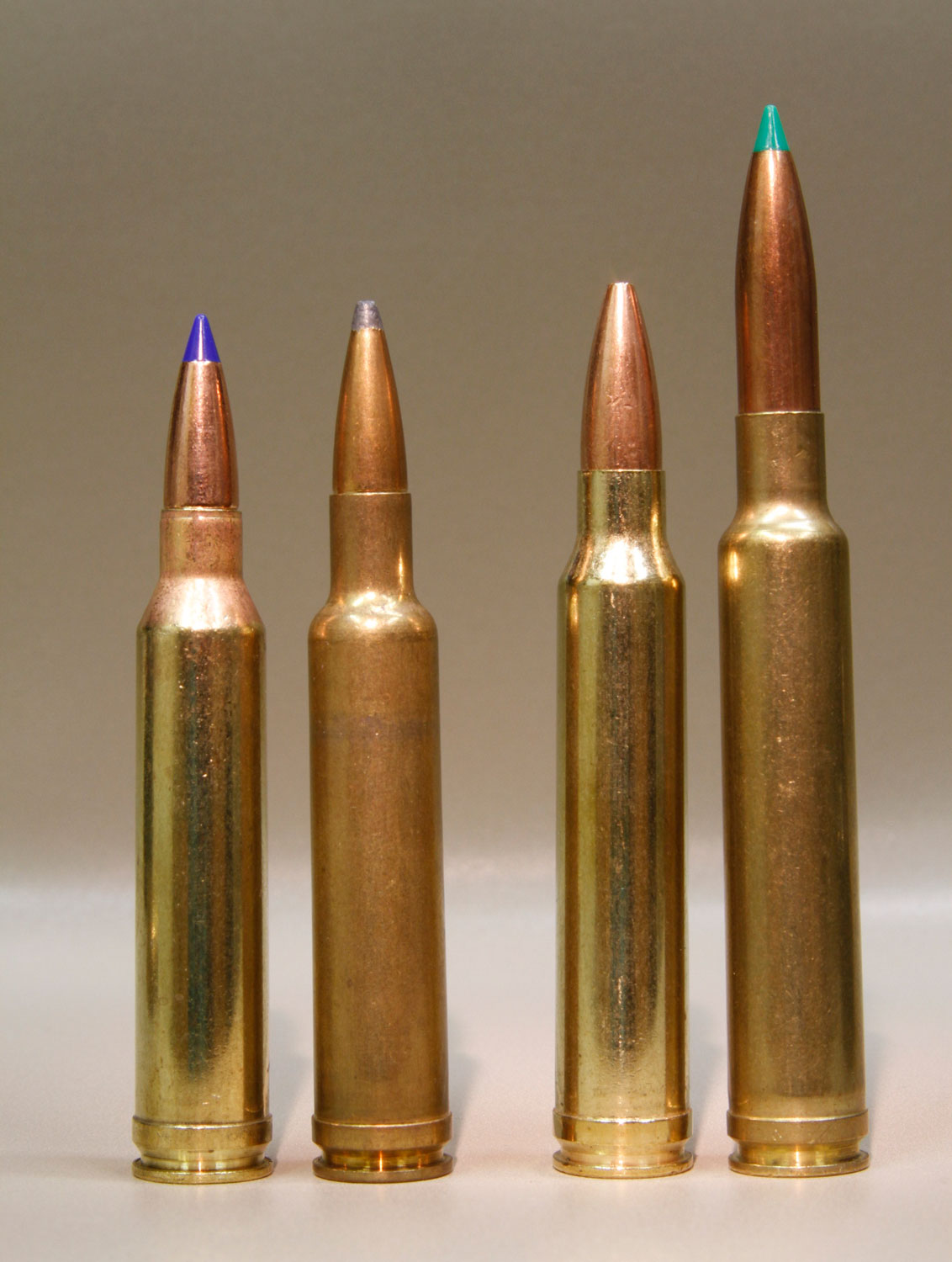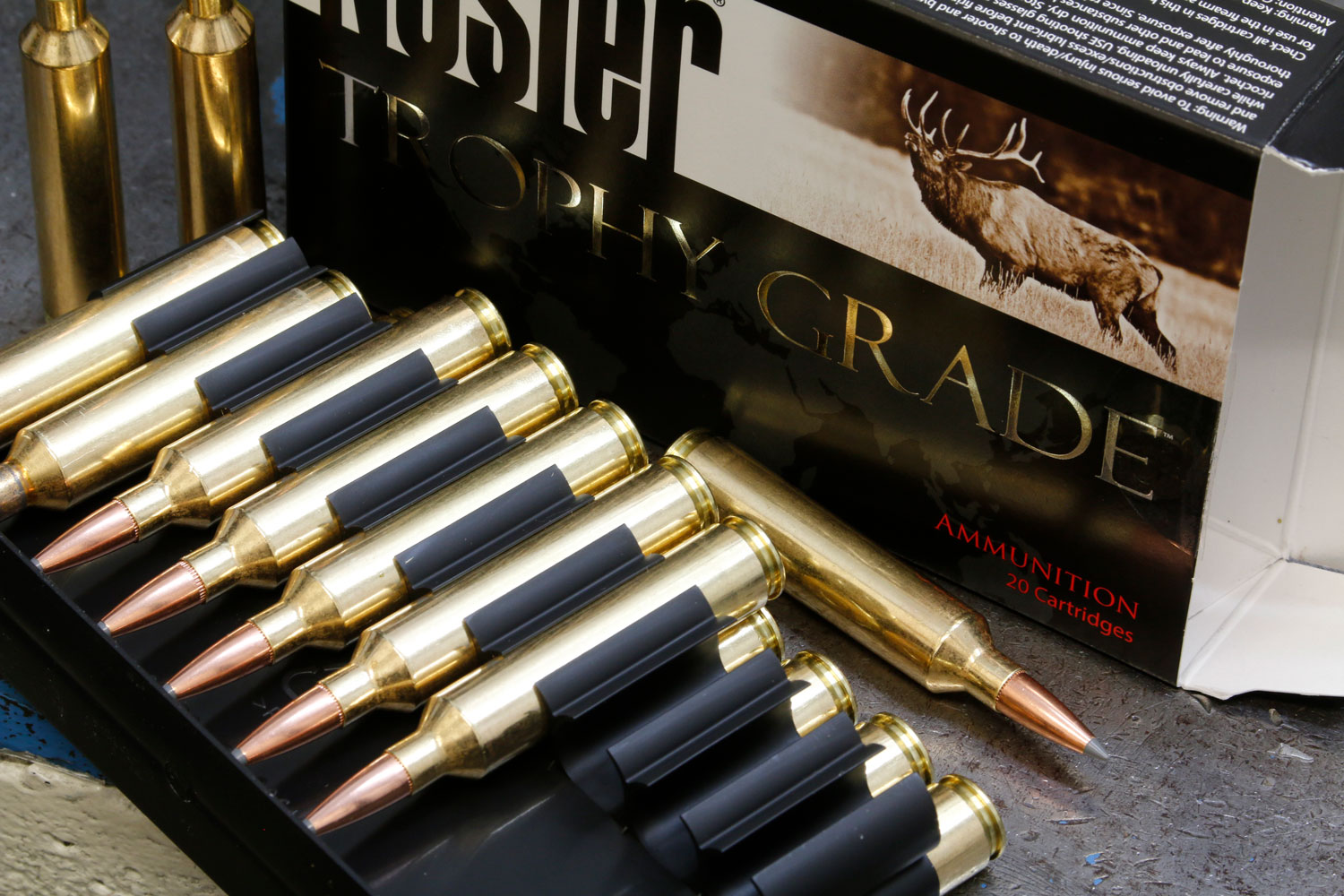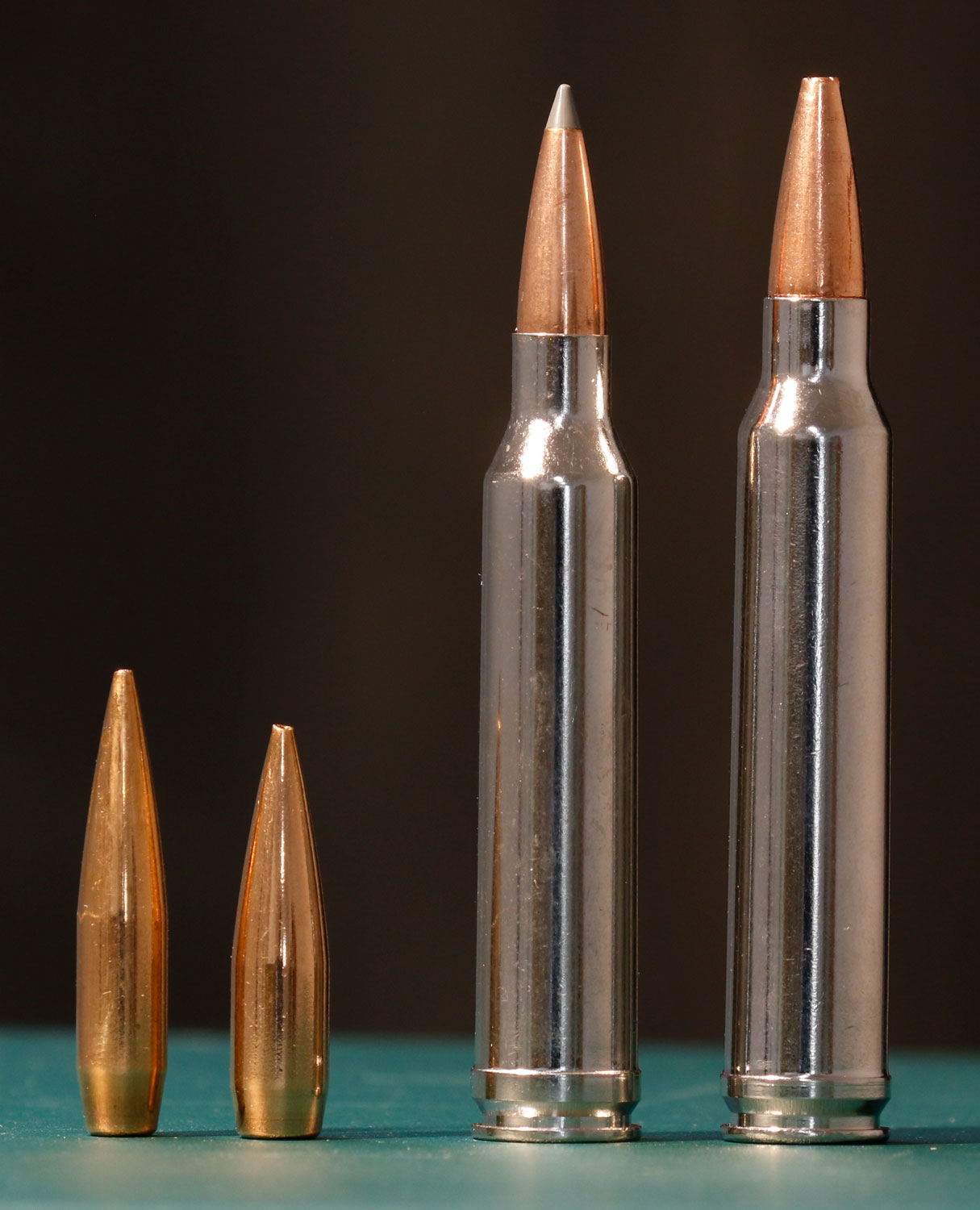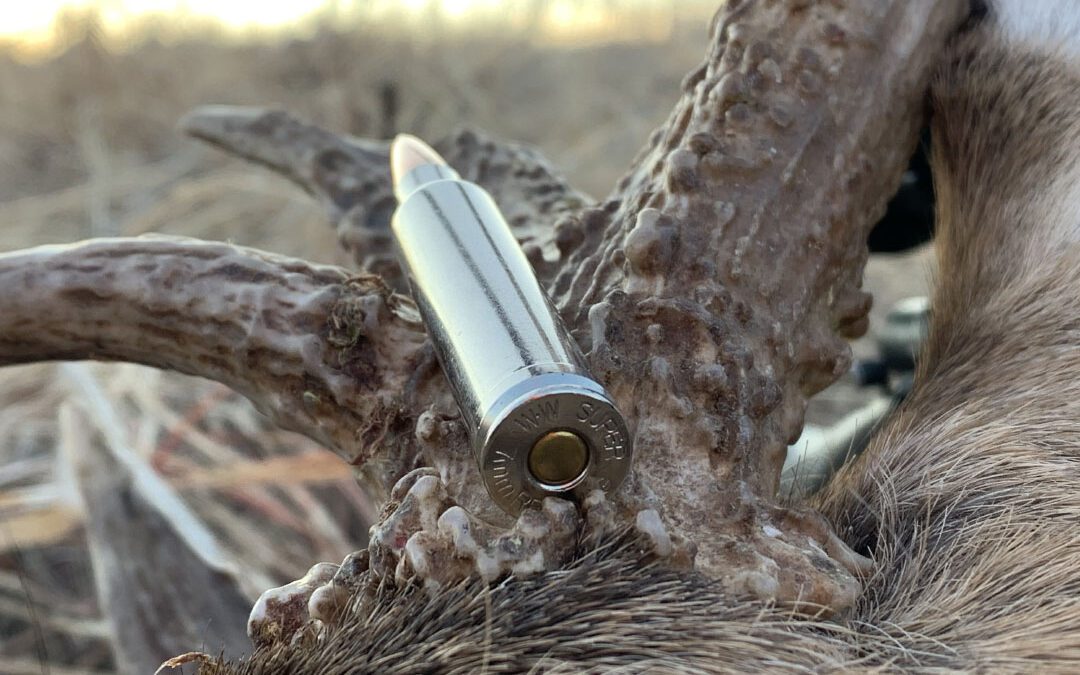Herr Mauser may not have known he was designing the King, but by 1910 his 7x57mm cartridge had scaled the heights of big game cartridges. From roe deer to elephants, it had settled everything. See Bell, Karamojo, W.D.M.
By 1970, the 7mm Remington Magnum had added additional popularity and reach, if not essential killing power, to .284-inch diameter bullets. And now, here near the end of the first quarter of the 21st century, the 7mm PRC threatens to drag this caliber spinning and sailing even deeper into the future.
Sorry 30-caliber fans, but the 28-caliber argues strongly as the perfect balance for a do-it-all cartridge. It’s one of the most popular rifle calibers in the world for at least four reasons.
1. 7mm bullets are sold in weights (100-grains to 195-grains) suitable for terminating everything from bunnies to bull elephants.
2. 7mm cartridges can be fired from “sporter-weight” rifles as light as 6 pounds without crippling the hunters who operate them. I’ve gone as light as 4 pounds with a 7mm-08 and lived to tell the tale. The caribou and mountain goat did not.
3. 7mm bullets can be designed to fly a long, long way while efficiently resisting wind deflection, minimizing drop and retaining maximum kinetic energy.
4. Compared to 30-caliber bullets of the same weight, .284 bullets have appreciably higher Sectional Density for (potentially) deeper penetration.
The 7mms are, let’s be honest, mathematically challenged. Neither the nominally .28-inch bores nor .284-inch bullets tape out at 7 millimeters. That number converts to just .2756-inches, which is why the British renamed the 7×57 Mauser the 275 Rigby. If we assume 7mm refers to bore diameter, we strike out again. The .28-inch bore translates to 7.112mm. Our .284-inch bullets are 7.21 millimeters in diameter, the additional width needed to fill the rifling grooves and seal the bore. The only two 7mm rifle cartridges known to carry the proper label, then, would be the Lazzeroni 7.21 Firebird and 7.21 Tomahawk, two proprietary 7mm rounds dramatically fast for their size. Such is the state of cartridge/bullet nomenclature. The numbers don’t always add up. Nevertheless, the .284-inch diameter bullet is the standard for all 7mm cartridges/rifles.
Actually, there are plenty of obscure 7mms to go around, largely because so many have been concocted, many of them near duplicates. Most are rounded off and labeled as 7mm, some as 28, 280 or 284. Ammo manufacturers in the USA alone build and sell 14 different 7mms. Throw in five produced by Europeans plus several proprietary rounds such as the 7mm Dakota and aforementioned Lazzeronis and we’re sorting through an extensive family. And we haven’t even mentioned the obsolete 275 H&H Magnum, the Canadian 280 Ross, the flash-in-the-pan 7x61mm Sharpe & Hart Super of the 1950s, 7mm Gibbs and who knows how many wildcats like the 7mm TCU, 7mm JRS, 7mm STE and Elmer Keith’s old 285 OKH. If you can’t find a 7mm cartridge that meets your velocity window, you aren’t trying.
But why even try? No need, but perhaps you’re curious or a stickler for efficiency. Your 300 magnums will continue doing as advertised, but as the years and felt recoil add up, you might sense an advantage in a cartridge that does the same with less. Investigate the 7mms and, with today’s bullet technology, I’m betting you’ll find one.

7mm bullets—long, sleek, high B.C. bullets—strike a lovely balance between deadly performance and reasonable recoil.
The Bullets
Let’s be honest, there’s nothing magical about .284-inch diameter bullets. They are just chunks of metal like any other bullet. But they are nicely balanced chunks. Not too narrow. Not too wide. Stretch them to reasonable lengths and shapes and they deliver a beautiful balance of aerodynamic efficiency and downrange energy without being so heavy that you need double handfuls of powder to drive them. Nor will firing them transfer a major beating to your face and shoulder.

The 300 Winchester Magnum and 300 Weatherby Magnums are proven world beaters, but the 7mm Remington Magnum and 7mm Weatherby Magnums to their left offer trajectory and terminal performance not far behind—with less recoil.
In lighter weights they can be driven much faster, yet they aren’t so short and stumpy that low B.C. costs them too much aerodynamic efficiency. To match the trajectory of any .284 bullet with a comparable .308 bullet in a same weight rifle, you’ll suffer about 20 percent more recoil and gain about 15 percent more on-target kinetic energy. Whether that energy is necessary is an open question. In the vast majority of cases, I think not. The upshot is that you can shoot most 7mm cartridges comfortably and address virtually all of your hunting and target shooting needs.

Nosler’s 28-caliber magnum finished near or at the top of the 7mm velocity race, only the 7mm Remington Ultra Magnum potentially besting it.
Handloaders can find .284-inch bullets weighing 100 grains to 195 grains. Factory loads in most 7mms are fitted with 120- to 175-grain bullets with 140- and 150-grain most common in the mid-power cartridges. You don’t often see 175-grain and heavier until you’re in the magnum rounds, but extended range target shooting has fueled manufacture of some extremely long, high B.C. bullets of 180 to 197 grains. G1 B.C. ratings are as high as .838!
As for bullet materials, construction and design/form, you’ll find everything from frangible, thinly jacketed varmint bullets to traditional cup-and-core, hollow-point match, partition “walled” bullets, bonded lead core, all-copper hollow points and hybrid mixes of any of these attributes. You’ll find flat base spire points and round-nose, flat-nose, polymer tipped, secant ogives and every other permutation of bullet you can imagine.

Bullets of the same weight and general shape have a higher B.C. in .284 than .308, which explains how the 7mm Remington Magnum can match or exceed 300 Winchester Magnum ballistic performance at longer ranges.
The B.C./Recoil Tradeoff
The recoil-to-performance balance of the 7mms has inspired legions of long-range target shooters who create the demand for exceptionally sleek, long, high B.C. bullets. The highest B.C.-rated .284-inch bullet as of this writing is Hornady’s A-Tip Match at .838. Berger rates its 195-grain Extreme Outer Limits Elite Hunter G1 B.C. .755, G7 B.C. .387! To exceed that in a 30-caliber you’d need a Berger 245-grain Extreme Outer Limits Elite Hunter bullet, G1 B.C. .807, G7 B.C. .413. The additional 50-grains of mass in that .308-inch bullet will increase recoil significantly.
What all this means for the family of 7mm cartridges and those of us interested in shooting them is an impressive, some would say ideal, balance of power, recoil, reach and terminal performance. The 7mms are nigh perfect for most kinds of hunting and target shooting.

